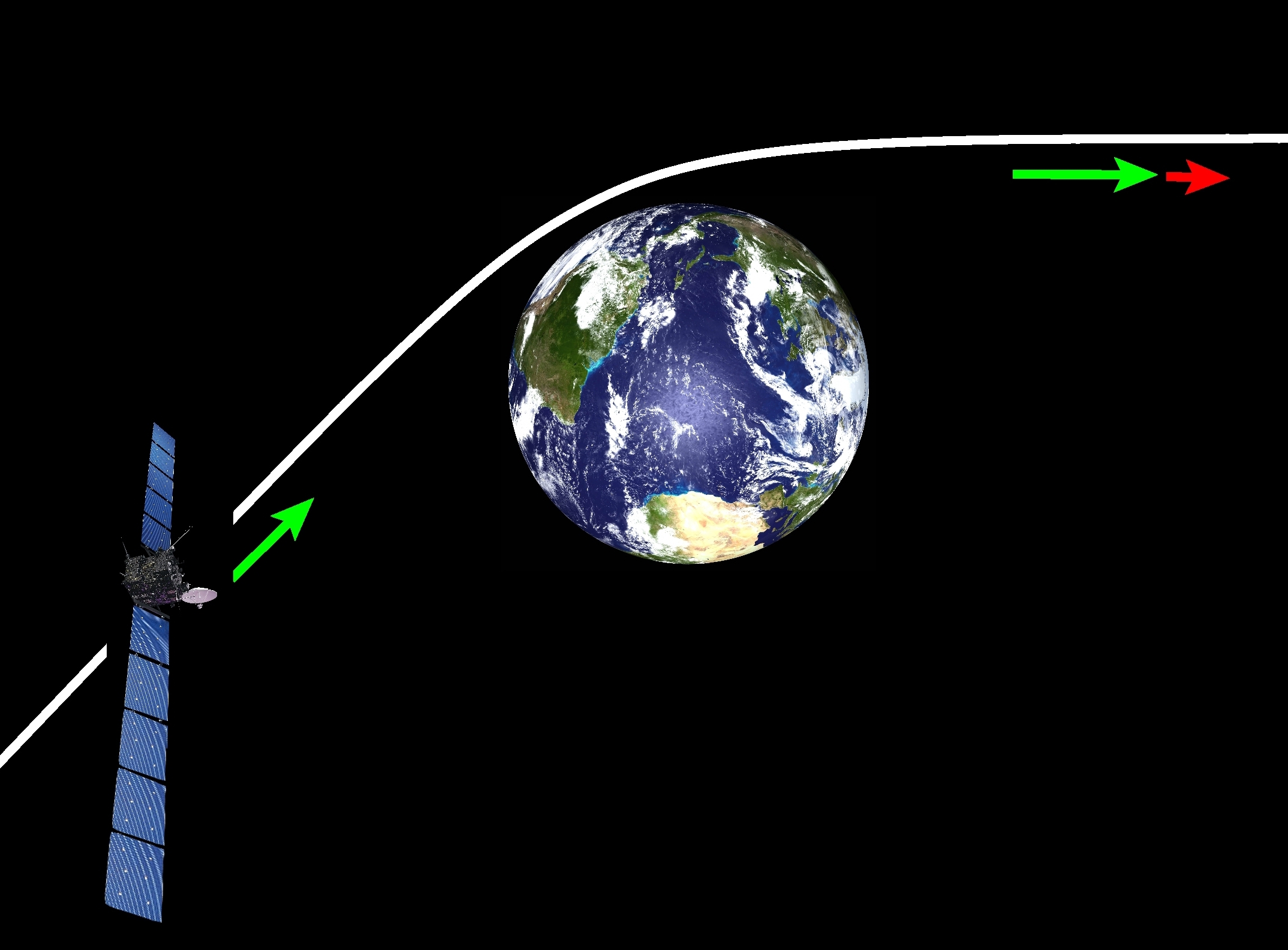
Second Team Meeting at ISSI, Bern, Switzerland: March 1-4, 2010
Last updated: Feb. 27, 2010 webmaster |
Focus: the Flyby
Anomaly It has been observed at various occasions that satellites after an Earth swing–by possess a significant unexplained velocity change by a few mm/s. This unexpected and unexplained velocity de/increase is called Flyby Anomaly and was observed at at least four satellites: Galileo, NEAR (Near Earth Asteroid Rendezvous), Cassini and Rosetta. These events prompted an investigation of both the navigation software and the mathematical models used for deep space navigation, but no definitive explanation to the source of the velocity change was found. Moreover, Flight Teams have found no evidence of thruster activities nor unusual behavior in their telemetry. Even first order estimates on various disturbing effects shows that none of these effects seems to explain the Flyby Anomaly. From there, the investigation of the Flyby Anomaly is of great importance for orbit determination, satellite navigation and potentially for gravitational physics. Goal: improvement of ODPs In order to obtain a better understanding of this effect and to find possible causes for this unexplained velocity change, it is highly convenient to supply and analyze all data of past flybys and to plan a complete, accurate and contiunous observation of future flybys. The analysis of data is then done with help of Orbit Determination Programs (ODPs). It is our goal to obtain the adequate data and to analyze them with approved ODPs and a new independent ODPs as well. We expect not only a verification of the Flyby Anomaly, but also to find hints to the particular direction of the local acceleration and on the strength. A better database will also enable one to establish a correlation between the observed velocity change and the orbital parameters. Before one starts with possible fundamental explanations of this effect, a serious and reliable error analysis has to be carried through. It is our goal to study all internal and external interferences, computational errors and mismodelings. A revision of the ODPs and including models and reference systems may be possible as well. Significance: finding the origin of the Flyby Anomaly The ISSI investigation could lead to a determination of the origin of the anomaly and to a characterization of its physical properties. The proposed investigation is scientifically important, it is timely, and is well situated in Europe. The investigation would be an excellent example to demonstrate the value of interdisciplinary teams in addressing complex problems in satellite navigation, orbit determination and in fundamental physics. The results of this study could find their way into many other areas of space-exploration applications and precision measurements in the near future. The most important outcome of this study will be the understanding of the flyby anomaly. Independent of the final result the implications are the improvement of ODPs and satellite-navigation and a new basis for precision measurements in fundamental physics. |